Indian heritage has a special place for Mughal architecture in India. Bringing in visitors from around the world, the Mughals had built monuments of ostentatious designs, elaborate splendor and impressive stature. Indian architecture flourished under the Mughals, as most of them were great builders who appreciated art and creativity. In the 300 years of their rule, a number of forts, palaces, mosques, mausoleums, gardens tombs, sprawled across the country. The beautiful Taj Mahal is one of the most beautiful example of Mughal architecture but there are many others that deserve a mention.
Here are the 10 of most spectacular Mughal Architectures in India that you must include on your tour to India:
Taj Mahal, Agra

A true wonder that impresses all that who have laid eyes on it, the best of Mughal Architecture is the Taj Mahal. Built by Shah Jahan in the memory of his beloved wife, Mumtaz, the white-marbled mausoleum is known as an icon of love.
The colossal structure built on the banks of River Yamuna, Agra was completed in 22 years to (1632-1653). This heritage monument is a combination of elements of Islamic, Turkish and Persian architectural designs has created this truly ethereal vision. It has been an UNESCO World Heritage Site since the year 1983, drawing visitors to glance at its beauty from all over the world.
Humayun’s Tomb, Delhi
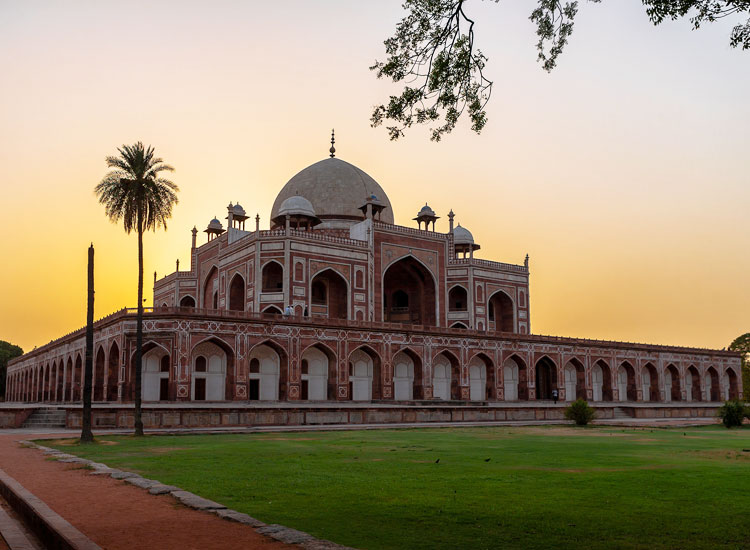
Humayun, the second Mughal king in India has an impressive monument built in his name in sprawling gardens in Delhi. Humayun’s tomb was constructed in the year 1569 AD by his widow Hamida Banu Begum, 14 years after his death.
This heritage monument was the first to have established the distinct Mughal architecture style in India. Persian architect Mirak Mirza Ghiyuath brought the architectural style of his homeland and combined it with other forms creating quite a masterpiece. The impressive garden tomb was awarded the UNESCO World Heritage status in 1993. For a quite tryst with history it’s one of the best places to visit in Delhi.
[Read about must-see historical architectures in India.]
Red Fort, Delhi
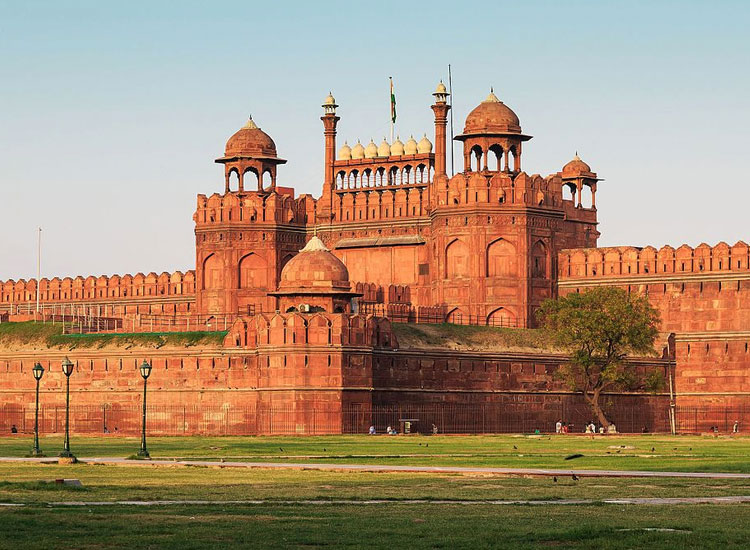
The palatial residence of the Mughals, Delhi’s Red Fort was the capital of the empire for around 200 years. The impressive fort is included in UNESCO’s list of world heritage sites in the year 2007.
Built during the reign of Shah Jahan, in the heart of Old Delhi, then known as Shahjahanabad, it is one of the best examples of Mughal architecture. The red sandstone-fort is spreads over an area of 254.67 acres of land. The fort has many special halls, palaces, sculptures, decorations, and it’s believed that the Kohinoor diamond was also used as one of the ornamentations. Diwan-I-Am, Diwan-I-Khas, Ranga Mahal, Moti Masjid and the Meena bazaar are some amazing historic structures in the fort.
[ Check out the best heritage hotels in Delhi. ]
Jama Masjid, Delhi
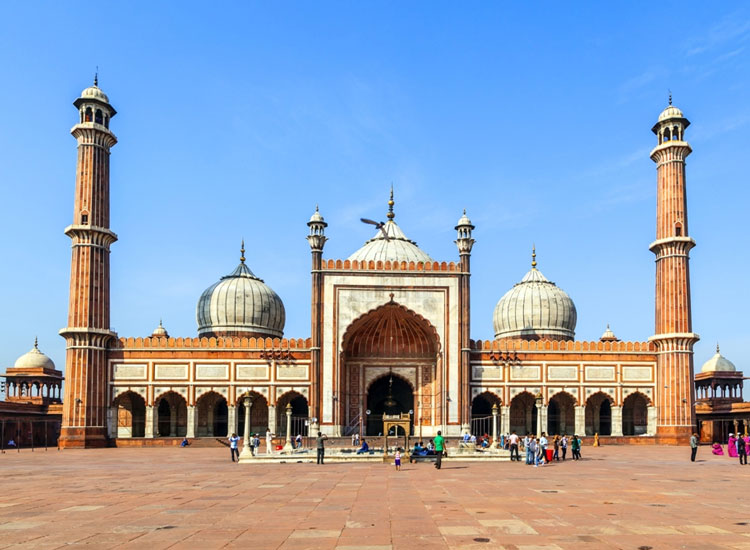
One of the most impressive mosques in the world, Jama Masjid built in the rule of Shah Jahan is a masterpiece of Mughal architecture in India. Originally named Masjid-i-Jahan-Numa which means “world-reflecting mosque”, it is one of the biggest mosques in India with 3 colossal domes, 4 towers, and 131 minarets.
The mosque took years between 1644 and 1656 to be completed and was around 1 million rupees then, which is now a few hundred millions now. The brilliant Mughal architect Saadullah Khan with more than 5000 workers working tirelessly built this awe-inspiring monument. During the holy prayers, the mosque can accommodated as many as 25,000 people at a time.
Buland Darwaza, Fatehpur Sikri
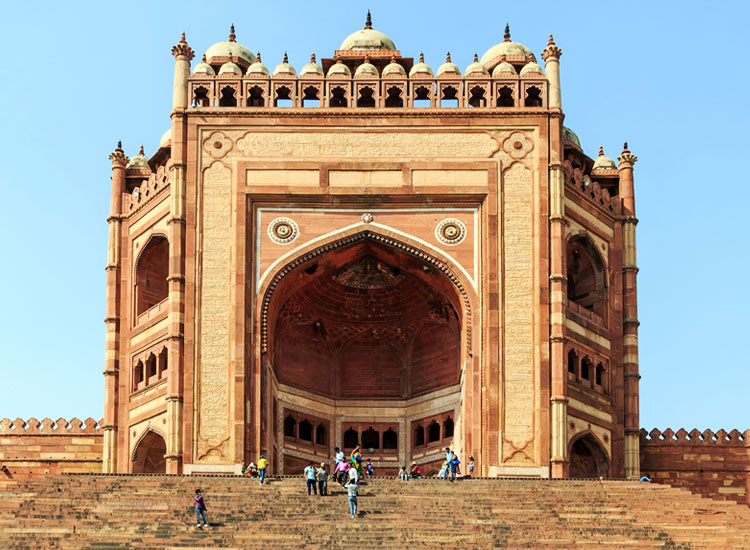
The lofty gateway of Fatehpur Sikri, Buland Darwaza is one of the most impressive architecture of the Mughal times. It was built during the reign of Emperor Akbar in the year 1601 to commemorate the Mughal’s conquest of Gujarat, it is a rare masterpiece of Indian heritage.
The Darwaza (door) guards the city of Fatehpur Sikri, now abandoned but once upon a time an unmatched beauty. The name means the “Gate of Magnificence”. It is regarded as one the most perfectly designed architecture in the whole of India. Built of red sandstone with hints of marble, it is embellished with fine carvings and inscribed quotes from the Holy Quran.
[ Embark on the classical forts and palaces tour to India. ]
Agra Fort, Agra
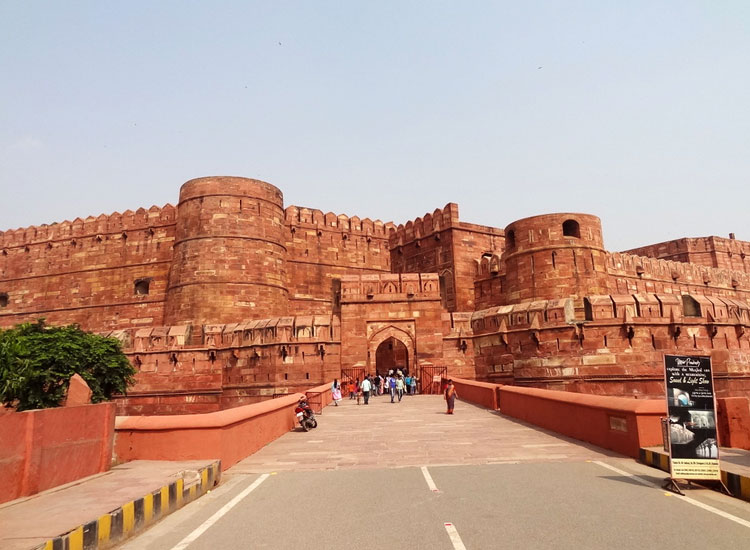
The pride of the Mughals, Agra houses the red-sandstone Agra Fort. Outstanding is the word to describe the fort which many also refer to as the walled city. Built by Emperor Akbar in the 16th century it served the centre of governance till 17th century until the capital was shifted to Delhi.
Located on the banks of River Yamuna, the fort has a number of other beautiful examples of Mughal Empire architecture including Jahangiri Mahal, Diwan-I-Am, Diwan-I-Khas, etc. In the rule of Shah Jahan, the fort was transformed into palatial residence which later served as a prison for him, where he was made captive by his own son.
[ Stay at the heritage hotels in Agra while exploring the city. ]
Jodha Bai’s Palace, Fatehpur Sikri
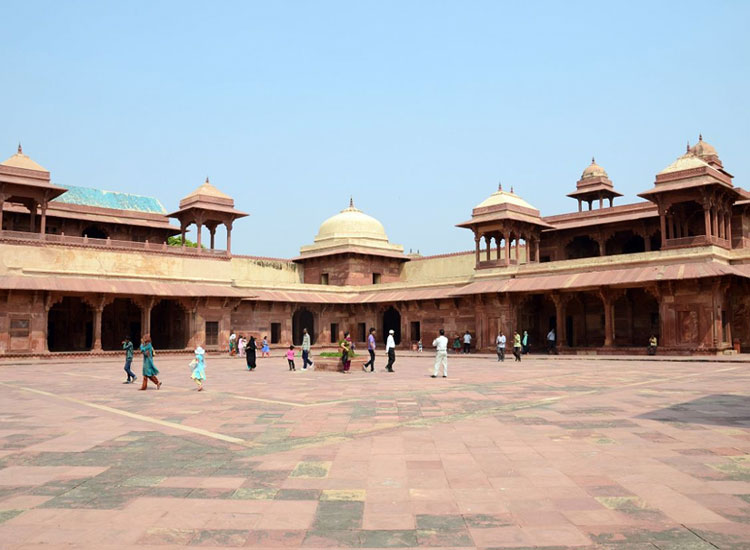
One of the finest creations of the Mughal, Jodha Bai’s Palace in Fatehpur Sikri was a gift to the Rajput wife of the Mughal Emperor, Akbar. The structure is an impressive example of Mughal architecture. It is the largest palace in the abandoned yet magnificent city of Fatehpur Sikri.
Marvel at the grand design and layout. The columns of rooms are ornamented with a variety of Hindu sculptural motifs that truly inspire awe. The glazed tiles on the roofs from Multan have an eye catching shade of turquoise. Though time has ravaged its beauty, the charm still remains the same.
Tomb of I’timād-ud-Daulah, Agra
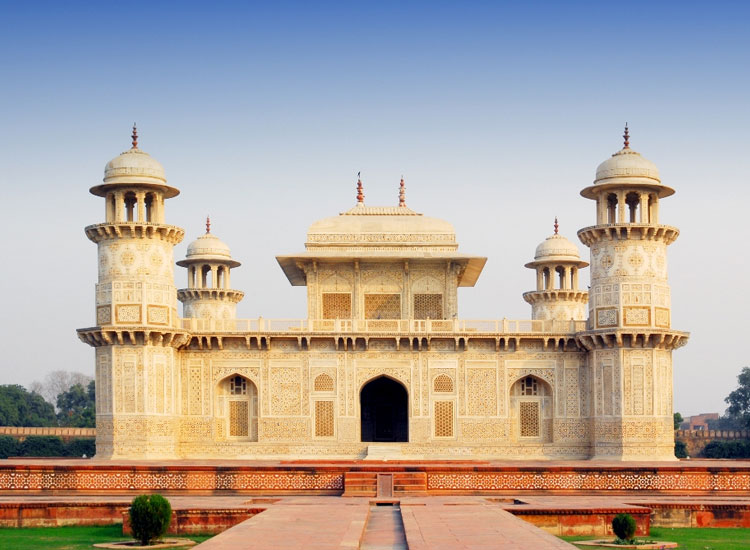
When taking about the marvelous examples of Mughal architecture in India, the tomb of I’timad-Ud-Daulah deserves to be mentioned. The mausoleum is also known as “Jewel box” and termed as “Baby Taj Mahal”.
The remarkable structure lies in Agra. The tomb is surrounded by many outbuildings and lush ornamented gardens. It was built between the years 1622-28 and was made under the orders of Jahangir’s wife Noor Jahan. It was built for Noor Jahan’s father Mirza Ghiyaz Beg after his death. Made of marble and red sandstone, the typical trait of Mughal architecture, it’s one of the best heritage monuments of Indian Mughal Empire.
[ Check out our Golden Triangle Tour with Varanasi. ]
Bibi Ka Maqbara, Aurangabad
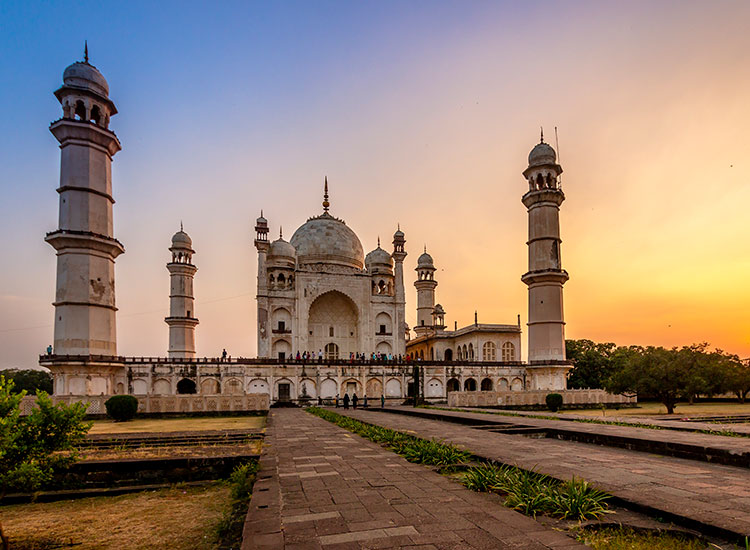
Taj Mahal is undoubtedly the best creations of Mughals and even its replicas and imitations are as breathtaking as the Taj. This brings us to Bibi Ka Maqbara in Aurangabad, one of the next greatest examples of Mughal architecture in India.
The mini replica of the Taj Mahal was built in the memory of Dilras Banu begum by Azam Shah, also the son of Aurangzeb. The Maqbara (mausoleum) was laid out in a shape of a hexagon amid Charbagh garden with ornamented minarets. The Mughal monument resembles the grand architecture and layout of the beautiful Taj Mahal, yet is small in stature.
Safdarjung’s Tomb, Delhi
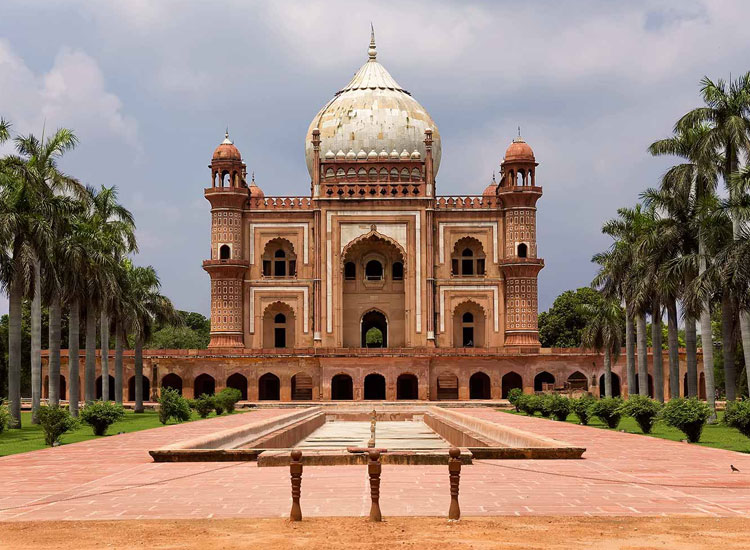
The Mughal-style architecture, Safdarjung’s Tomb was not built by Mughals but it imitates its grand impressive design and layout. Designed by an Ethiopian architect, it marks the last colossal garden tomb of the Mughals.
The tomb built of red and brownish-yellow colored sandstone is laid amid green gardens. Intricate designs are carved on its façade, the back side of which houses several rooms and a library. A translated version of an Arabic inscription is etched on its surface which means “When the hero of plain bravery departs from the transitory, may he become a resident of god’s paradise”.
[Plan your India heritage tour with our exclusively created packages.]


Interesting blog …very useful information provided to users … …thanks for sharing us…keep it posting…For More Information …
Intresting Blog thanks for sharing ..
Fantastic website!!!!
I had visited few of these places and loved all of them. The hotels in India are really good their restaurant menu has some of the best dishes in the world.
These all places are worth visiting
This site has a lot of knowledge to give us .
Hey Udeesha,
Thank you for your kind words. Keep following our blog for more such interesting posts.
good to see a fleet of clean and bright photos. myself a resent of Delhi but originally belong to Calcutta.
A lot of thanks for your elaborate and comprehensive writing.
Marvelous writing about architecture of which I was only remotely aware, aside from the Taj Mahal.